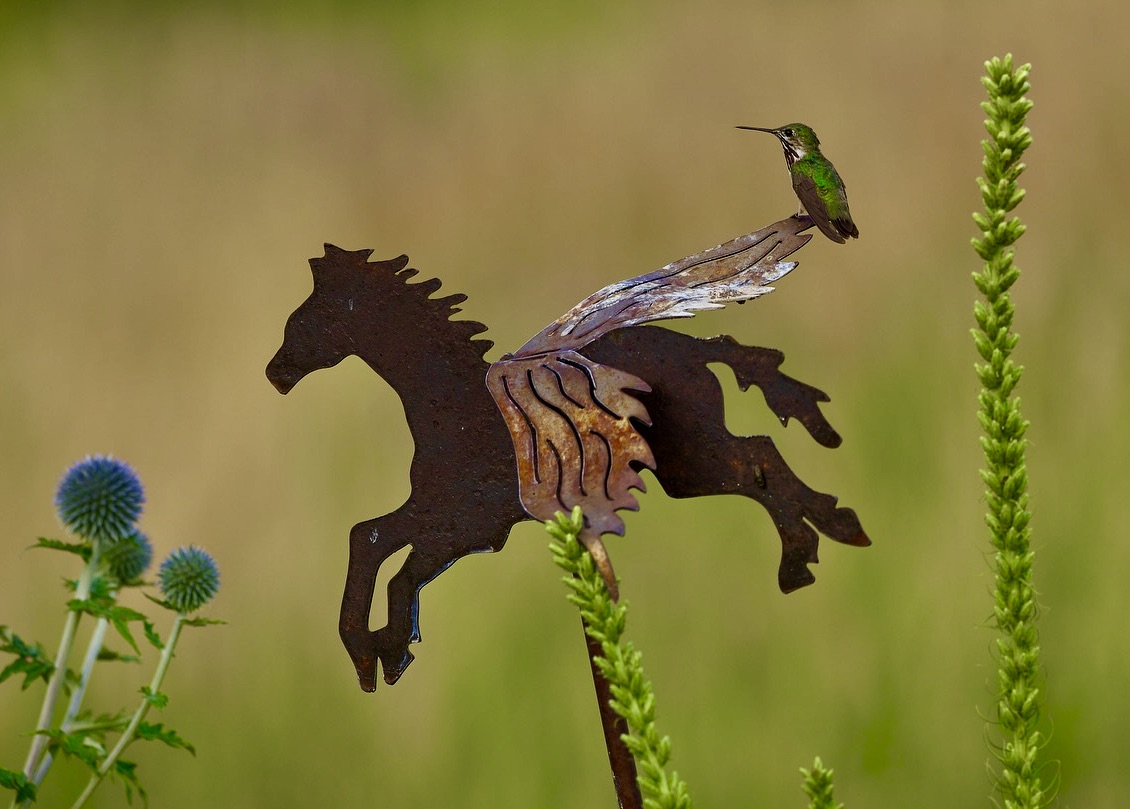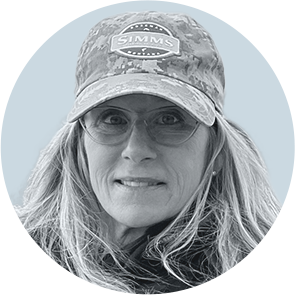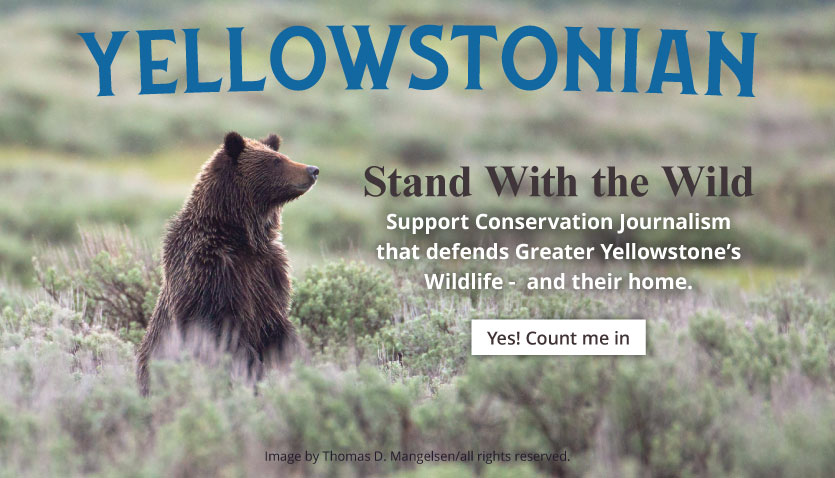EDITOR’S NOTE: As that great American philosopher Ferris Bueller once observed (look up Ferris Bueller if you’re unfamiliar): “Life moves pretty fast; if you don’t stop and look around once in a while, you could miss it.” As we transition from our warmest season into much cooler mornings, shorter days and bets being taken on when the first snowfall will arrive in our mountain valleys, keen observer, photographer and talented Yellowstonian columnist Holly Pippel shares a few memories from her forays afield in the northern end of the Greater Yellowstone Ecosystem, her home terrain. All photos by Holly Pippel. Enjoy.

With the passing of time comes the changing of seasons. The transition between the two is bittersweet for me. The anticipation for the arrival of migrating birds, emerging colorful flora, brand new hooves on the ground and feathers in the sky in late spring is something I look forward to. Now as summer winds down and fall is in the air, my excitement peaks again with the melodies of bugling elk, the rustling of aspen leaves, the crunch of sage and the past their prime summer grasses beneath my feet.
Coming from southern Georgia and spending most of my youth in the South, I never had the joy and curiosities of experiencing true seasons. How Mother Nature cycles with extreme temperatures, an array of short-lived foliage and the only remaining year-round green hue is found on the pines. Witnessing these sometimes brutal, yet beautiful, life cycles should remind us that life is precious, beauty is fleeting and it’s tough to be wild in this rapidly changing human landscape – the Gallatin Valley.
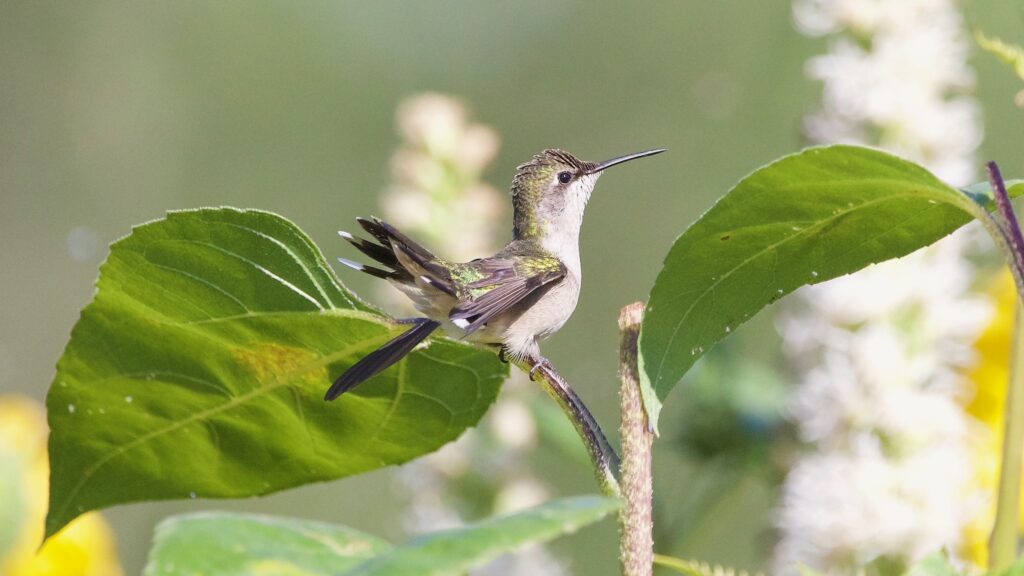
Small but Mighty
Every summer I can hardly wait to hear the first whirling chirp of the Calliope hummingbirds. The pollinator gardens are really coming into their own and offer food and shelter for birds, bees, moths, butterflies, and a host of other life.
Calliopes, which frequent my gardens the most, are the smallest bird native to the US and Canada. Rufous, black-chinned, broad -tailed & Anna’s are also found in our Montana. Breeding range for calliopes includes Montana and north to British Columbia. They nest in the cooler climates of mountain states and often use spider webs and horsehair for nesting material. As the chicks grow, the elastic spider webs expand to suit their needs. They migrate over 5,000 miles south to Mexico and winter in the pine-oak forests there. With a life span of up to eight years, they also have incredible memory retention for past nesting spots and food resources. I have had returning birds…..I believe. Consider adding Red Bird in a Tree (their favorite by far), bee balm, penstemon, salvia, coneflower, a variety of mints, nasturtium, and globe thistle to your gardens for hours of hummingbird enjoyment. Sunflowers are also popular with hummingbirds due to their sturdy branches and large leaves for perching, shade, and bathing under the mist of a sprinkler.
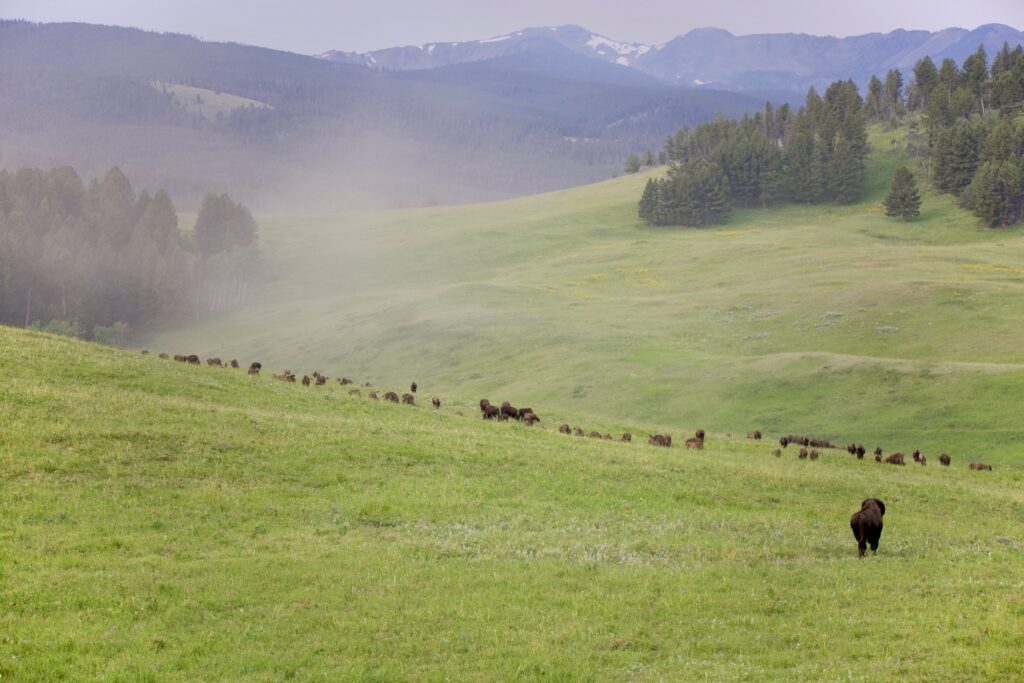
Reunited
A bull bison separated from the herd for several weeks realizes he is about to be reunited. The Flying D Ranch southwest of Bozeman and owned by Ted Turner rotates grazing to achieve better soil health and enhance nutritious forage. The bull pictured here missed the last move to greener pastures. I could almost hear him thinking as he watched and listened to the herd come towards him. He straightened up, took a vigorous dirt bath, lifted his tail, and proudly made his way to greet the approaching herd.
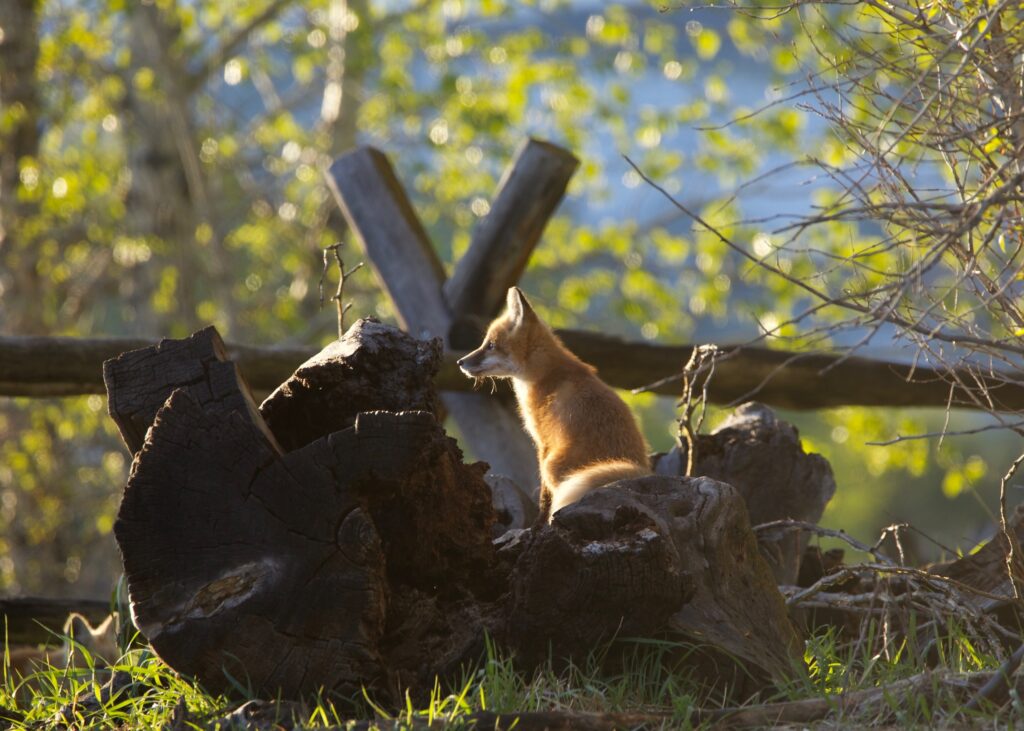
Bliss
This year I chronicled a den of foxes from fourweeks of age until they grew old enough to follow their mother and cover more territory. Roughly five months. A single parent raised the 5 kits and did an outstanding job of getting them on their way. Being realistic, I know that most will not reach adulthood. Coyotes, traffic, trapping, owls, eagles, hunting, domestic dogs, disease, starvation, and congenital defects all play a role in the course of their sometimes-short lives. Out of the five kits there were three still active on my trail cameras a few weeks ago. One kit disappeared early on and another was killed by a domestic dog. Only 1 in 4 fox kits will reach adulthood.
These are sobering stats and not unique to just foxes. Some studies suggest that close to 20 percent of bears die before reaching adulthood, 40 to 60 percent of wolf pups perish before they are mature and 25 percent of elk calves survive their first year. It’s tough to be wild.
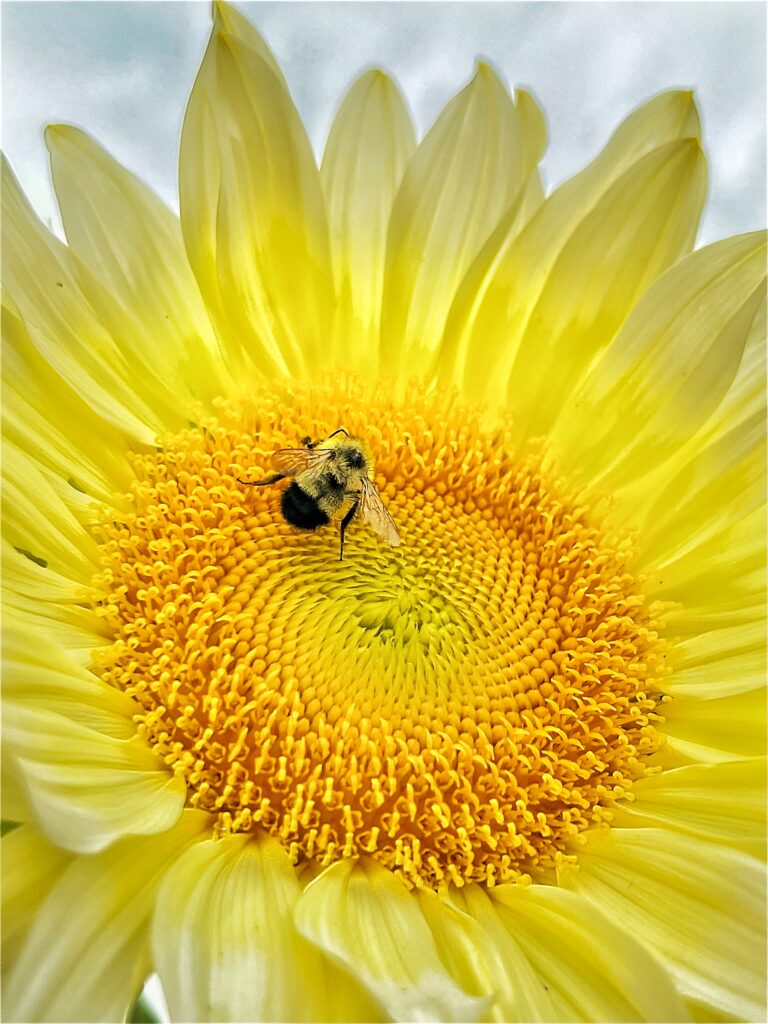
Bumbles
Did you know: there are about 500 known species of native bees in Montana? Our state, entomologists say, has the greatest number of bumble bees. I have seen an uptick in bumble bees in my gardens as I embellish with plants and flowers that are beneficial to them. This year bombus huntii and bombus vagans were daily visitors to the pollinator bed. Bees are on the decline as most of you know. The American bumblebee population has plummeted by 90 percent since 2000. Climate change, habitat loss, urban development and pesticides play a significant role in the decline. The rusty patched bumblebee and the Franklin’s bumblebee are the only two currently protected under the Endangered Species Act with more species being considered. What can we do? Limit pesticide use at home and in farming practices, be more deliberate, protective and conservation minded of future development of open spaces, planting bee friendly gardens. You can also submit your name to the petition to protect American bumble bees and outlawing home improvement store from selling plants with bee-killing neonic pesticides on them. We can all make a difference.
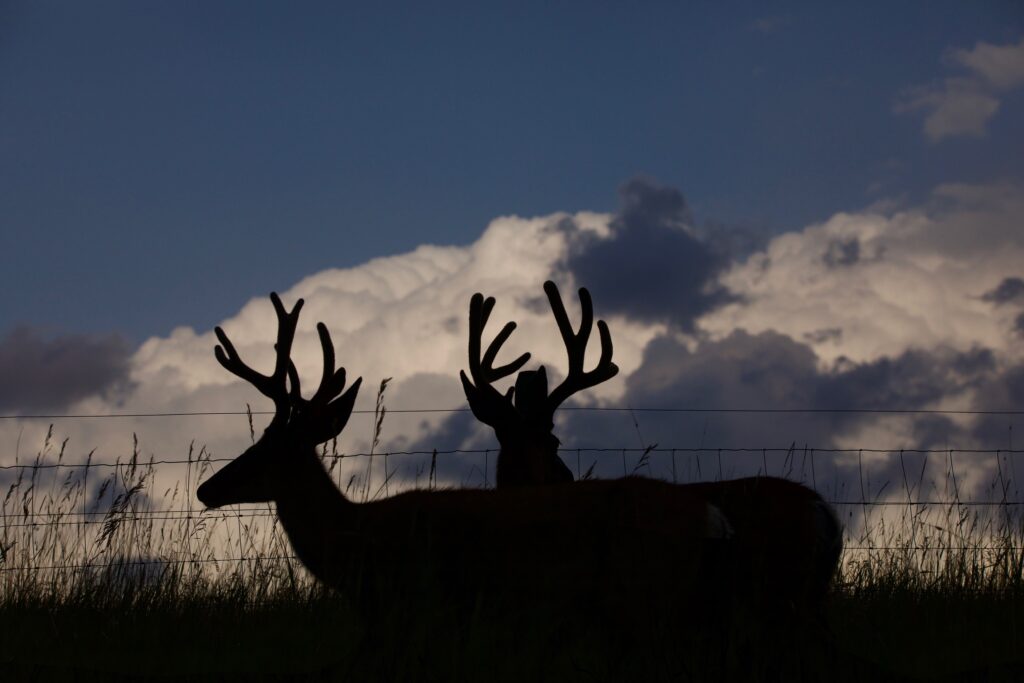
Thunderheads
Summertime brings thunderstorms. Southwest Montana and neighboring Wyoming and Idaho got our share of cinematic light shows this season. Giant thunderheads adorn the sky and lend themselves to dramatic backdrops for photographing wildlife. Experiencing mule deer bucks in velvet is always a treat. The velvet, which is a thin layer of skin with blood vessels, are covered in hair and sensitive to injury. The tiny hairs are detection systems to avoid the bucks from bumping them on trees and fence posts, as well providing minerals to the bone beneath. Velvet is hot to the touch and creates its own insect repellent, sebum- a waxy secretion, that repels insects. Beginning in August through September, the antlers reach full size, and the velvet starts to shed. Elk, moose, and deer take part in this annual biological ritual. Mule deer are not as good at adapting to our urban landscape as white- tail deer. They are more sensitive to human encroachment and activities. Chronic Wasting Disease (CWD), bacterial diseases, blue tongue and ectoparasites are conditions that can cause declines in mule deer populations. With the challenges mentioned above, I am always encouraged when I see frequent, good size herds of mule deer.
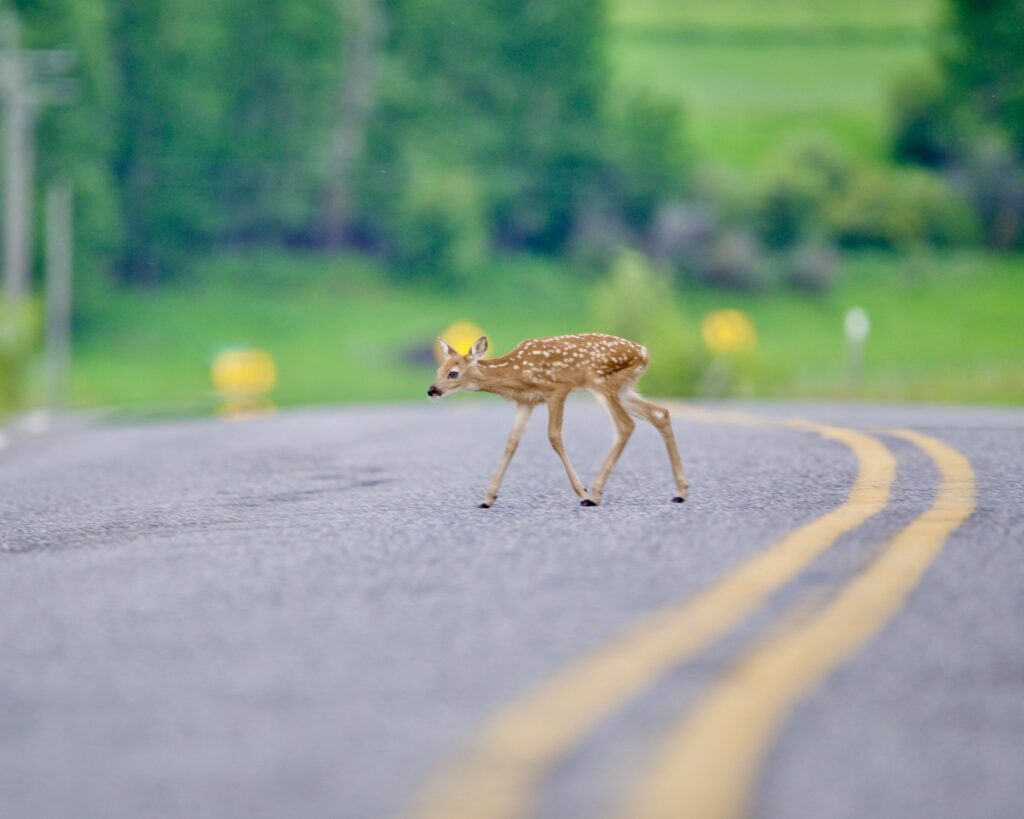
New Life
The color palate of nature is mesmerizing to me. Spots with purpose for predator camouflage and greenish -grey eyes on newly born mammals have hues and geometrics that one could never dream up.
As their eyes darken with the production of melanin from exposure to sunlight and their spots soften, they mature and no longer need to lay for hours camouflaged in the grass awaiting the return of their mother. Deer fawns and elk calves usually lose their spots at 90 to 120 days of age. After that they undergo their first molt and begin growing their winter coats and weaning from their mothers. I have removed too many spotted deer babies from our highways and side roads here in southwest Montana. So many of these collisions could be avoided. If you would like to help accumulate wildlife strike information by becoming a citizen scientist, please download the ArcGIS Survey 123 app. There you can mark deceased animals and animals trying to navigate busy roads. This data will help organizations determine problem areas on roads and make recommendations for solutions. Above all, stop racing through life. Slow down on the highway, soak in Mother Nature at her speed, and be empathetic to the needs of wildlife that make this bioregion such a special one on Planet Earth.
BELOW: As a parting treat, here’s a short video clip by Pippel of sunset on the Flying D Ranch captured in late August with a rainbow and bison in the foreground of the Spanish Peaks.

